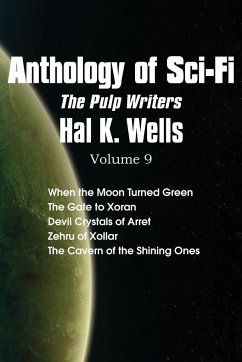The Anthology of Sci-Fi V8 is a collection of five si-fi stories from some of the most prolific writers of the past century. Included are: Monsters of Moyen by Arthur J. Burks, The World Behind the Moon by Paul Ernst, Phantoms of Reality by Ray Cummings, Vortex Blaster by Edward E. Smith, The World Beyond by Ray Cummings.








